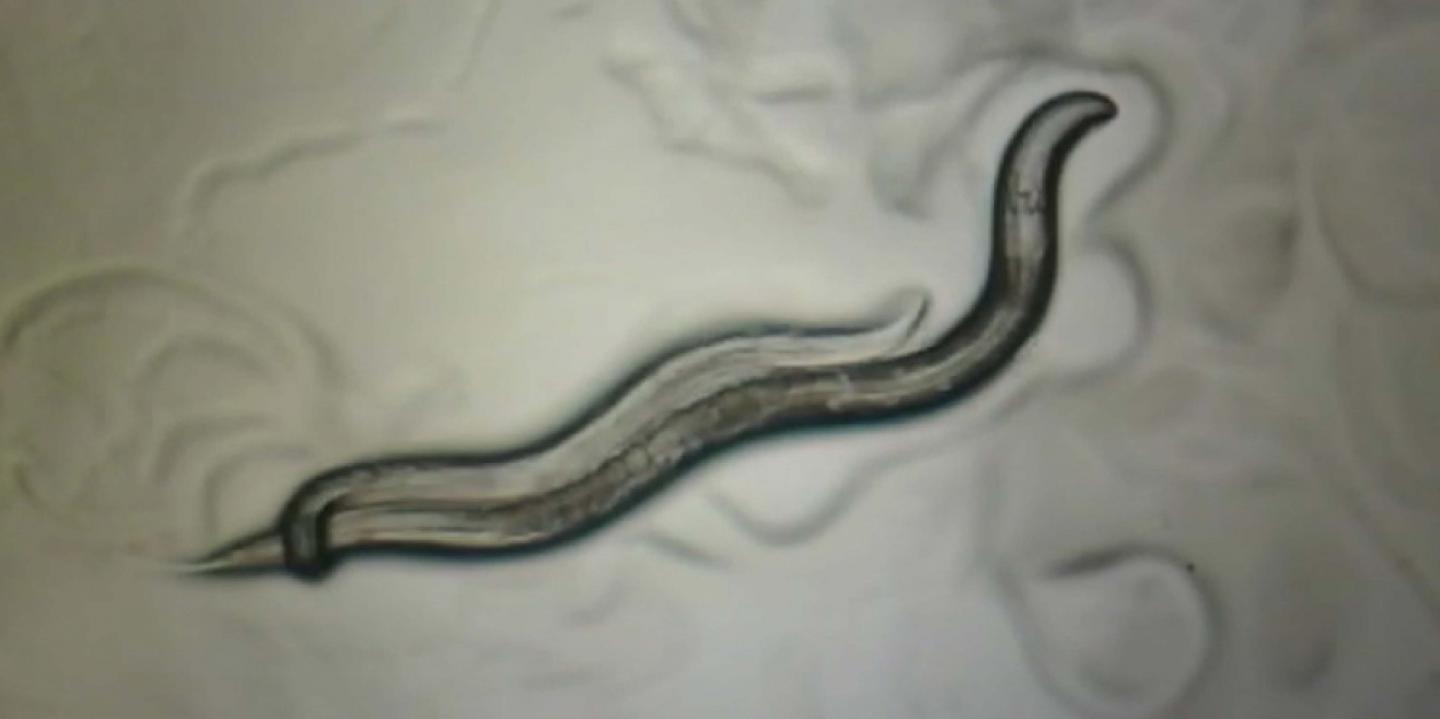
Male and female worms engage in different behaviors, which may result from sex-specific wiring patterns in the brain. Nematode worms may not be from Mars or Venus, but they do have sex-specific circuits in their brains that cause the males and females to act differently. According to new research published in Nature, scientists have determined how these sexually dimorphic (occurring in either males or females) connections arise in the worm nervous system. The research was funded by the NIH's National Institute of Neurological Disorders and Stroke (NINDS).
"For decades, there has been little focus on the impact of sex on many areas of biomedical research," said Coryse St. Hillaire-Clarke, Ph.D., program officer on this NINDS project. "This study helps us understand how sex can influence brain connectivity."
In nematode worms, (known as Caenorhabditis elegans or C. elegans), a small number of neurons are found exclusively in male or female brains. The remaining neurons are found in both sexes, although their connection patterns are different in male and female brains. Oliver Hobert, Ph.D., professor of biological sciences at Columbia University in New York City, and his colleagues looked at how these wiring patterns form.
Dr. Hobert's team observed that in the worms' juvenile state, before they reach sexual maturity, their brain connections were in a hybrid, or mixed state, comprised of both male and female arrangements. As they reached sexual maturity, however, their brains underwent a pruning process, which got rid of particular connections and led to either male or female patterns.
"We found that differences in male and female brains develop from a ground state, which contains features of both sexes. From this developmental state, distinctly male or female features eventually emerge," said Dr. Hobert.
Next, Dr. Hobert's team showed that sex-specific wiring in the brain results in dimorphic behavior. They discovered that PHB neurons, chemosensory brain cells that detect chemical cues in the environment such as food, predators or potential mates, work differently in males and females. In males, these neurons proved to be important in recognizing mating cues while in females, the neurons helped them avoid specific taste cues. However, early in development, PHB neurons in males also responded to signals regulating taste, suggesting that even though those neurons are found in all nematodes, in adults, their functions differ as a result of sex-specific wiring in the brain.
Dr. Hobert's team used genetically engineered nematodes to look more carefully at individual connections between brain cells. The researchers found that swapping the sex of individual neurons changed wiring patterns and influenced behavioral differences in males and females.
Additional experiments helped to identify genes involved in regulating the pruning process during development. Dr. Hobert's group discovered that certain transcription factors, which are molecules that help control gene activity, are present in a dimorphic state and may help establish male or female connections in the brain. In future experiments, Dr. Hobert and his colleagues plan to examine how these molecules target specific connections for pruning.
Source: NIH/National Institute of Neurological Disorders and Stroke
 Print Article
Print Article Mail to a Friend
Mail to a Friend
